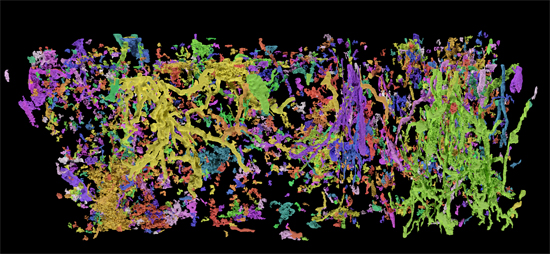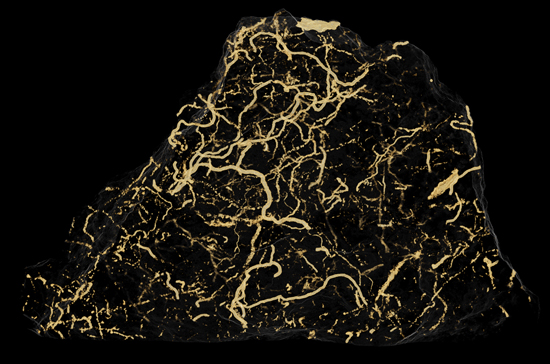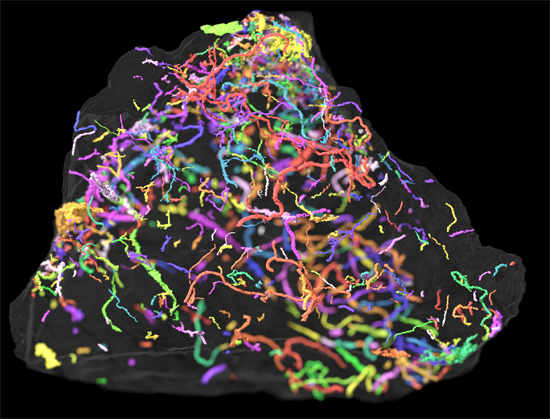500-Million-Year-Old Trace Fossils Shed Light on Animal Evolution in New Study
Tracing the Traces of Early Animal Life
Darwin was aware of the problem, Huxley and Owen had considered it too. The American Charles Walcott, in 1909*, literally stumbled across evidence to support the idea of a bizarre array of early animal forms, but the fossil evidence that helps to pinpoint and then map the evolution of the Kingdom Animalia in deep geological time, is scarce to say the very least. How and when did the first animals evolve? What type of creatures were they? These are the questions that taxed the minds of some of the greatest scientists in history, now, thanks to some new research published today, the way we think about how all animals evolved on Earth might just change.
Scientists have discovered microscopic traces of animal life more than half-a-billion years old. The international team, including scientists from Manchester University, have identified trace fossils left by some of the first ever organisms capable of active movement.
Plotting the Evidence of Ancient Burrowing Creatures
Picture credit: Manchester University
Ancient Trace Fossils
The picture above might look like a Jackson Pollock, but the image shows a computer generated, three-dimensional model of the trace fossils found by the scientists. Trace fossils preserve evidence of the activity of organisms. They are often the only evidence palaeontologists have for extinct animals whose bodies lacked any hard parts. No physical remains of the microscopic worms that made these burrows have been found, but the researchers suggest that they were made by a type of nematoid-like worm, an animal with bilateral symmetry, making these organisms more closely related to Chordates (animals with notochords and spinal columns), than creatures like jellyfish and corals.
The fossils were discovered in sediment in the Corumbá region of western Brazil, close to the border with Bolivia. The burrows are extremely small. They measure from less than fifty to six hundred micrometres or microns (μm) in diameter. That means the tiny creatures that made them were similar in size to a human hair, which can range from forty to three hundred microns wide. One micrometre is just one thousandth of a millimetre.
The Research Team Carefully Mapped the Intricate Burrows in the Ancient Sediment
Picture credit: Manchester University
Commenting on the significance of this research, Dr Russell Garwood (University of Manchester School of Earth and Environmental Sciences), stated:
“This is an especially exciting find due to the age of the rocks, these fossils are found in rock layers which actually pre-date the oldest fossils of complex animals – at least that is what all current fossil records would suggest.”
The Ediacaran-Cambrian Transition
The fossils found date back to a geological and evolutionary period known as the Ediacaran–Cambrian transition. This was when the Ediacaran Period, which spanned 94 million years from the end of the Cryogenian Period, 635 million years ago, moved into the Cambrian Period around 541 million years ago. To put that into context, dinosaurs lived between 235 and 66 million years ago in the Mesozoic Era and our human species (H. sapiens), may have been present on this planet for around 300,000 years or so.
Dr Garwood explained:
“The evolutionary events during the Ediacaran–Cambrian transition are unparalleled in Earth history. That’s because current fossil records suggest that many animal groups alive today appeared in a really short time interval.”
The scientists suggest these burrows were created by “nematoid-like organisms”, similar to a modern-day roundworm, that used an undulating locomotion to move through the sediment, leaving these trace fossils behind. This is important because current DNA studies, known as “molecular clocks”, which are used to estimate how long ago a group animals originated, suggests the first animals appeared before these trace fossils. The research paper published in the academic journal “Nature Ecology and Evolution”, demonstrates that these trace fossils pre-date similar animals known from the fossil record.
500-Million-Year-Old Trace Fossils
Luke Parry, the lead author of the paper (Bristol University) stated:
“Our new fossils show that complex animals with muscle control were around approximately 550 million years ago, and they may have been overlooked previously because they are so tiny. The fossils that we describe were made by quite complex animals that we call bilaterians. These are all animals that are more closely related to humans, rather than to simple creatures like jellyfish. Most fossils of bilaterian animals are younger, first appearing in the Cambrian period.”
*It was the American Charles Walcott who discovered the Burgess Shale deposits of British Columbia, that first provided palaeontologists with a window into the radiation and diversity of the Animalia during the Middle Cambrian. The unique taphonomy of these shales permitted the preservation of a multitude of marine invertebrates including thousands of specimens of soft-bodied creatures.
Mapping the Extensive Network of Trails
To find such tiny fossils the team used X-ray microtomography, a special technique that uses X-rays to create a virtual, three-dimensional model of something without destroying the original object.
Paper Reference – “Ichnological evidence for meiofaunal bilaterians from the terminal Ediacaran and earliest Cambrian of Brazil” is being published in Nature Ecology & Evolution – DOI 10.1038/s41559-017-0301-9
Further Reading:
Cambrian worm discovery: It was a Worm’s World Back in the Cambrian.
A potential transitional fossil between worms and Arthropoda: Transitional “Cactus-like” Fossil Between a Worm and an Arthropod.
Visit the Everything Dinosaur website: Everything Dinosaur.




